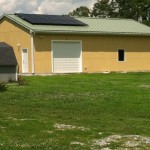Interconnectedness
A wonderful bit of news from a group that started out to help the indigenous people of the Amazon…
“…In order to continue fueling the waste-to-energy factories that provide electricity to a quarter of a million homes and 20 percent of the entire country’s district heating, Sweden is now importing trash from the landfills of other European countries. In fact, those countries are paying Sweden to do so. You read that correctly, countries are paying to get rid of a source of fuel they themselves produced so that Sweden can continue to have the energy output they need. You don’t have to be an economist to know that’s one highly enviable energy model. Aside from the economic benefit, Sweden’s system of sustainability clearly has vast environmental benefits. Aside from traditional recycling programs, their waste-to-energy system ensures minimal environmental impact from the country’s waste. Sweden’s extremely efficient circle of consumption, waste management, and energy output provides the current global population and coming generations inspiration and guidance towards a more sustainable future. They represent one ally of many who understand the need to live sustainably and who fully commit to doing so….” – See more at: http://www.pachamama.org/blog/models-of-sustainability-sweden-runs-out-of-garbage#sthash.Dyasy5DX.SqcrLMLR.dpuf
http://www.pachamama.org/about
Solar Panels in South Central Virginia
During an 8.5 day period that included one cloudy and drizzly day and 7.5 partly cloudy days, the system generated 118 kwh! Take a look at your electric bill, everyone’s usage will vary depending on lifestyle, number of people in the household and whether or not some of your energy needs are met by other sources (e.g., natural gas, propane, oil) but you will see that off-setting 118 kwh in just a few, less than ideal, days is worthwhile. Here is a shot of the rack that holds the panels in place, no roof penetration is needed, maintaining the integrity of the standing seam metal roof below.
Vocabulary and Some Other Lessons
lo·ca·vore: one who eats foods grown locally whenever possible
food miles: the distance food travels from the farm to the store where it is purchased
Important and maybe familiar terms, but they do not provide the complete picture. Gary Adamkiewicz, senior research scientist in environmental health at the Harvard School of Public Health and co-instructor for From Farm to Fork: Why What You Eat Matters, discusses the nuances of food miles and their impact on our climate.
The primary message: look at the energy needed for the production of food, not just the distances traveled.
He also shares five principles for reducing the impact on climate that results from our food choices:
1. Lower your food chain standards. Your overall dietary pattern can be more important than how far your food travels. Foods derived from livestock accumulate impacts along the entire food chain that feeds them, so eating lower on this chain is a better path. Moving toward a plant-based diet is a classic case of win-win-win: better for the environment, better for the climate, and better for your health. You don’t need to be an uber-vegan to make a difference. Start by swapping a few meals each week.
2. Bad if by land, good if by sea (and worst if by air). Limit your consumption of foods that are shipped by air, such as asparagus and many berries from South America, which need to get to market quickly. Remember that long trucking hauls can pack a climate punch. Rail transport is efficient, but much less product moves this way in the United States. Sometimes a long container ship voyage can be worth it if the food has a small production footprint (like the New Zealand lamb). See the National Resource Defense Council’s Health Facts for more information on food miles and which foods travel by air.
3. Local is more than nearby. Expand your view of local beyond space and into time. Purchasing in-season produce should be another goal, since you will likely avoid energy sinks like heated greenhouses and cold storage. Check out the National Resource Defense Council’s Eat Local Map for information on farmer’s markets and seasonal eating near you.
4. Go to the source. Processing, packaging, heating, and refrigeration all consume energy. So avoid highly processed foods. When you incorporate fresh, local fruits and vegetables into your meals, you save some energy-intensive steps and perhaps some petrochemical-derived packaging along the way.
5. Be COOL. It never hurts to know where your food comes from. Starting with the 2002 Farm Bill, the United States began requiring country-of-origin labeling (COOL) for certain foods. The list now includes beef, veal, pork, lamb, goat, chicken, fish, shellfish, and fresh and frozen fruits and vegetables. This labeling can help you understand the miles embedded in your dinner.
To read more go to:
http://www.extension.harvard.edu/hub/blog/extension-blog/buying-local-do-food-miles-matter




Follow Us!